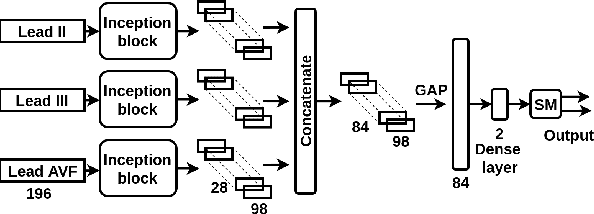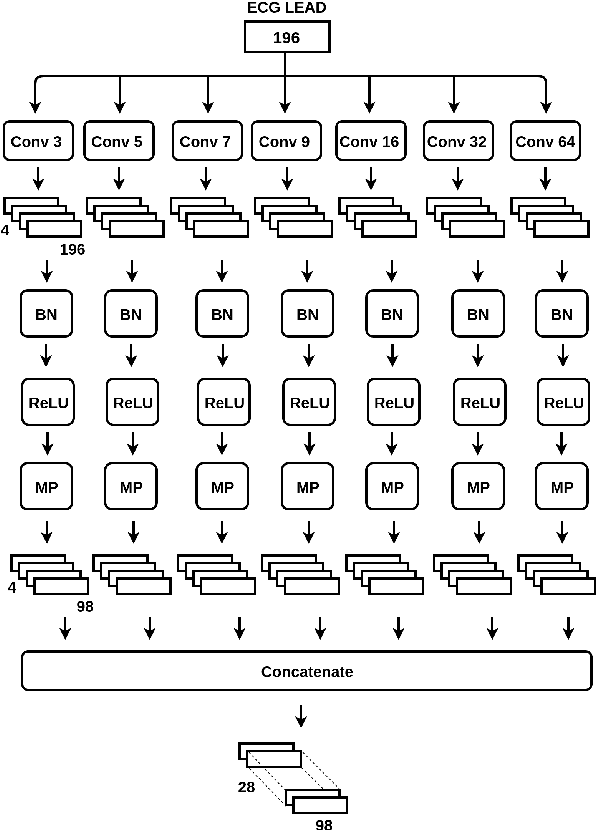Celia Shahnaz
EMG Signal Classification for Neuromuscular Disorders with Attention-Enhanced CNN
Sep 19, 2023Abstract:Amyotrophic Lateral Sclerosis (ALS) and Myopathy present considerable challenges in the realm of neuromuscular disorder diagnostics. In this study, we employ advanced deep-learning techniques to address the detection of ALS and Myopathy, two debilitating conditions. Our methodology begins with the extraction of informative features from raw electromyography (EMG) signals, leveraging the Log-spectrum, and Delta Log spectrum, which capture the frequency contents, and spectral and temporal characteristics of the signals. Subsequently, we applied a deep-learning model, SpectroEMG-Net, combined with Convolutional Neural Networks (CNNs) and Attention for the classification of three classes. The robustness of our approach is rigorously evaluated, demonstrating its remarkable performance in distinguishing among the classes: Myopathy, Normal, and ALS, with an outstanding overall accuracy of 92\%. This study marks a contribution to addressing the diagnostic challenges posed by neuromuscular disorders through a data-driven, multi-class classification approach, providing valuable insights into the potential for early and accurate detection.
ResEMGNet: A Lightweight Residual Deep Learning Architecture for Neuromuscular Disorder Detection from Raw EMG Signals
Sep 19, 2023Abstract:Amyotrophic Lateral Sclerosis (ALS) and Myopathy are debilitating neuromuscular disorders that demand accurate and efficient diagnostic approaches. In this study, we harness the power of deep learning techniques to detect ALS and Myopathy. Convolutional Neural Networks (CNNs) have emerged as powerful tools in this context. We present ResEMGNet, designed to identify ALS and Myopathy directly from raw electromyography (EMG) signals. Unlike traditional methods that require intricate handcrafted feature extraction, ResEMGNet takes raw EMG data as input, reducing computational complexity and enhancing practicality. Our approach was rigorously evaluated using various metrics in comparison to existing methods. ResEMGNet exhibited exceptional subject-independent performance, achieving an impressive overall three-class accuracy of 94.43\%.
Detection of Inferior Myocardial Infarction using Shallow Convolutional Neural Networks
Aug 18, 2018


Abstract:Myocardial Infarction is one of the leading causes of death worldwide. This paper presents a Convolutional Neural Network (CNN) architecture which takes raw Electrocardiography (ECG) signal from lead II, III and AVF and differentiates between inferior myocardial infarction (IMI) and healthy signals. The performance of the model is evaluated on IMI and healthy signals obtained from Physikalisch-Technische Bundesanstalt (PTB) database. A subject-oriented approach is taken to comprehend the generalization capability of the model and compared with the current state of the art. In a subject-oriented approach, the network is tested on one patient and trained on rest of the patients. Our model achieved a superior metrics scores (accuracy= 84.54%, sensitivity= 85.33% and specificity= 84.09%) when compared to the benchmark. We also analyzed the discriminating strength of the features extracted by the convolutional layers by means of geometric separability index and euclidean distance and compared it with the benchmark model.
 Add to Chrome
Add to Chrome Add to Firefox
Add to Firefox Add to Edge
Add to Edge